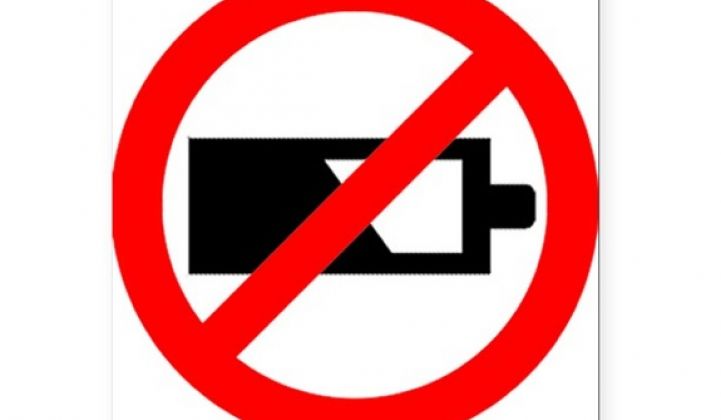It’s been nearly a year since California’s investor-owned utilities started to deny grid interconnections for battery-connected solar systems. The California Public Utilities Commission has been promising a ruling that could resolve the impasse -- but apparently SolarCity, the state’s would-be solar-storage kingpin, is fed up with waiting.
This week, SolarCity announced it had put a halt to applications for grid interconnections at the state's big three investor-owned utilities, Southern California Edison, Pacific Gas & Electric, and San Diego Gas & Eletric. Of the roughly 500 customers that have signed up for the batteries, about 100 customers have received them, SolarCity says. But of those, only twelve customers have received permission to connect to the grid.
UPDATE: SolarCity spokesperson Will Craven told us in a Friday interview that it's not putting a halt to battery installations -- "Those are under contract already, they're going in," he said. What it has stopped doing is paying $800 per application for a utility system that can take months to process, and comes with another $600 to $2,900 for new meters and utility fees before it can even be considered grid-ready.
So far, eleven Pacific Gas & Electric customers have gotten permission to grid-interconnect, after spending the $800 application fee and another $600 for the new meter installation and operations costs to separately meter their solar-storage combo. SDG&E has approved only one customer, at an additional cost that is still being worked out, Craven said. And Southern California Edison, which hasn't approved any of the ten applicants in its territory, is insisting onva $2,900 fee for its separate metering system, he said.
At issue is the decision by these utilities to deny battery-equipped solar customers the simple net energy metering interconnections available to standard solar systems. Utilities have claimed that the batteries could store grid power, then feed it back under the guise of solar-generated power. Instead, they’ve demanded these systems undergo an $800 inspection, which can take months to set up, and then install a separate metering system meant for much larger-scale projects, which adds the additional costs varying across jurisdictions. .
Solar-storage system installers and industry advocates have been up in arms against this policy since Southern California Edison started implementing it last spring. Storage vendor Outback Power, for example, has pointed out that its system is designed only for emergency backup and cannot feed battery power back to the grid. Even if a storage system is capable of this kind of battery-to-grid arbitrage, as SolarCity’s dual-inverter based systems are, the economics of degrading battery lifespan by discharging and charging them for this purpose doesn’t make sense, vendors have pointed out.
But utilities have stuck to their guns -- and that’s led to a significant backlog of solar-storage projects. The California Public Utilities Commission estimated in October that most of the 319 projects of this type applying for the state’s Self-Generation Incentive Program funds have been unable to move forward. That’s a collective 10 megawatts of energy storage that has been blocked, a figure that’s presumably grown since that time.
In October, CPUC President Michael Peevey issued an assigned commissioner ruling (PDF) that proposes giving qualifying storage devices the same benefits available to today’s net-metered renewable generating facilities. But that ruling is still working its way through the CPUC, disappointing storage industry advocates who had hoped for a decision earlier this year.
SolarCity CEO Lyndon Rive and his cousin, Tesla CEO Elon Musk, complained during a CPUC workshop last month that the utilities’ blockade has been part of a broader resistance against distributed renewable energy innovation that could threaten traditional utility business models. “This is a game-changing product, and those in the game don't want to change the game," Rive said.
As a Rocky Mountain Institute report released last month points out, commercial and residential power customers could find solar and batteries a viable alterative to grid power across large swaths of the United States over the coming decade. Even so, RMI agrees with a range of grid experts that the greatest value of storage-backed solar for utilities and customers alike comes from systems that are integrated into the grid, not divorced from it.
Given that the CPUC is also developing rules for integrating 1.3 gigawatts of energy storage into the state’s grid by 2020, it seems unlikely that it will permit California’s biggest utilities to prevent battery-backed solar systems from connecting with the grid. Just how those systems will fit into the CPUC’s ongoing reconfiguration of state net metering policy may be the bigger question.
After all, batteries that could help make distributed solar PV a more reliable, dispatchable grid energy resource seem like something utilities might be willing to support. SolarCity is just one of a growing number of solar players looking at this possibility to help carry solar PV past the age of incentive-based growth, and into a new era as a ubiquitous part of the grid at large.



